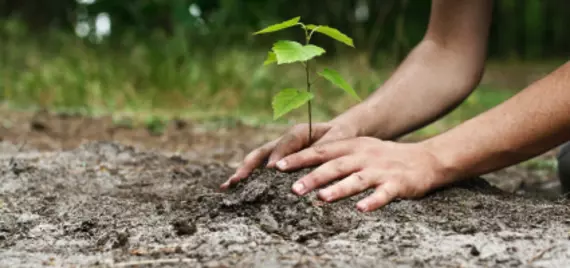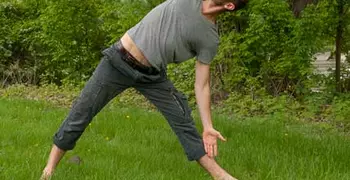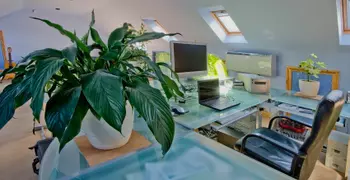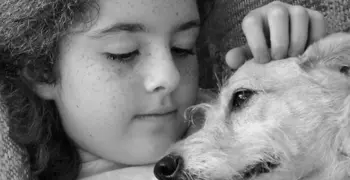Find Out More about Nature and Us
Course
The Center for Spirituality and Healing at the University of Minnesota offers a fully online course Nature Heals. Courses are open to current students at the University of Minnesota, students at other academic institutions, and lifelong learners in the community. For assistance with registrations, or for more information, please contact Erin Fider.
Books & articles
Barker, S, et al. (2003). Improved performance on clerical tasks associated with administration of peppermint odor. Percept Motor Skills; 97:1007–10.
Berman, M. G., Jonides, J., & Kaplan, S. (2008). The cognitive benefits of interacting with nature. Psychological Science, 19(12), 1207-1212.
Bowler, D. E., Buyung-Ali, L. M., Knight, T. M., & Pullin, A. S. (2010). A systematic review of evidence for the added benefits to health of exposure to natural environments. BMC Public Health, 10, 456.
Bringslimark, T., Patil, G., & Hartig, T. (2008). The Association Between Indoor Plants, Stress, Productivity And Sick Leave In Office Workers. Acta Horticulturae, 775, 117.
Bureau of Labor. American Time Use Survey Summary. June 22, 2012. Accepted at http://www.bls.gov/news.release/atus.nr0.htm on May 11, 2013.
Cervinka, R., Röderer, K., & Hefler, E. (2012). Are nature lovers happy? on various indicators of well-being and connectedness with nature. Journal of Health Psychology, 17(3), 379-388.
Coley, R., Kuo, F. E., & Sullivan, W. C. (1997). Where does community grow? The social context created by nature in urban public housing. Environment and Behavior, 29(4), 468.
Devries, S. (2003). Natural environments -- healthy environments? An exploratory analysis of the relationship between greenspace and health. Environment and Planning, 35(10), 1717.
Diette, G. B., Lechtzin, N., Haponik, E., Devrotes, A., & Rubin, H. R. (2003). Distraction therapy with nature sights and sounds reduces pain during flexible bronchoscopy: A complementary approach to routine analgesia. Chest, 123(3), 941-948.
Dijkstra, K., Pieterse, M., & Pruyn, A. (2006). Physical environmental stimuli that turn healthcare facilities into healing environments through psychologically mediated effects: Systematic review. Journal of Advanced Nursing, 56(2), 166-181.
Hartig, T. (1991). Restorative effects of natural environment experiences. Environment and Behavior, 23, 3.
Hu, Z. (2008). Linking stroke mortality with air pollution, income, and greenness in northwest Florida: An ecological geographical study. International Journal of Health Geographics, 7, 1.
Kim, T. (2010). Human brain activation in response to visual stimulation with rural and urban scenery pictures: A functional magnetic resonance imaging study. Science of the Total Environment, 408(12), 2600.
Kuo, F. (2001). Aggression and violence in the inner city: Effects of environment via mental fatigue. Environment and Behavior, 33(4), 543.
Largo-Wight, E., Chen, W. W., Dodd, V., & Weiler, R. (2011). Healthy workplaces: The effects of nature contact at work on employee stress and health. Public Health Reports (Washington, D.C.: 1974), 126 Suppl 1, 124-130.
Lohr, V. (2007). Benefits of nature: What we are learning about why people respond to nature. J. Physiol Anthropol: 26(2), 83.
Li, Q. (2008). Relationships between percentage of forest coverage and standardized mortality ratios (SMR) of cancers in all prefectures in japan. The Open Public Health Journal, 1, 1.
Marcus, C., & Barnes, M. (Eds.) (1999). Healing gardens ( Trans.). New York, NY: John Wiley and Sons.
Mayer, F. S., Frantz, C. M., Bruehlman-Senecal, E., & Dolliver, K. (2009). Why is nature beneficial? Environment and Behavior, 41(5), 607-643.
Mind Organization. (2007). Ecotherapy: The green agenda for mental health. UK: Mind Publications.
Mitchell, R., & Popham, F. (2008). Effect of exposure to natural environment on health inequalities: An observational population study. Lancet, 372(9650), 1655-1660.
Morrison, C., & Gore, H. (2010). Relationship between excessive internet use and depression: A questionnaire-based study of 1,319 young people and adults. Psychopathology, 43(2), 121-126.
NASA, Office of the Chief Technologist. Plants Clean Air and Water for Indoor Environments. Accessed May 11, 2013 at http://spinoff.nasa.gov/Spinoff2007/ps_3.html
Park, B., Tsunetsugu, Y., Ishii, H., & et al. (2008). Physiological effects of shinrin-yoku (taking in the atmosphere of the forest) in a mixed forest in shinano town, japan. Scandinavian Journal of Forest Research., 23(3), 278.
Park, S., & Mattson, R. (2009). Ornamental indoor plants in hospital rooms enhanced health outcomes of patients recovering from surgery Journal of Alternative & Complementary Medicine, 15(9), 975-980.
Raudenbush, B, et al. (2001). Enhancing athletic performance through the administration of peppermint odor. J Sport Exerc Psychol; 23:156–60.
Stamatakis, E. (2011). Screen-based entertainment time, all-cause mortality, and cardiovascular events: Population-based study with ongoing mortality and hospital events follow-up. Journal of the American College of Cardiology, 57(3), 292-299.
Selub, E., Logan, A. (2012). Your brain on nature. Mississauga, Ontario: Wiley.
Shepley, M. Gerbi, R., Watson, A. Imgrund, S. Patient and staff environments: The impact of daylight and windows on ICU patients and staff. World Health Design. Accessed May 11, 2013 at http://www.worldhealthdesign.com/Patient-and-staff-environments.aspx
Takano, T. (2002). Age-adjusted mortality and its association to variations in urban conditions in shanghai. Health Policy, 61, 239.
Taylor, A., Kuo, F. (2008). Children with attention deficits concentrate better after walk in the park. Journal of Attention Disorders; 12 (5), 402.
Ulrich, R. S. (1981). Natural versus urban scenes. Environment and Behavior, 13(5), 523-556.
Ulrich, R. S. (1984). View through a window may influence recovery from surgery. Science, 224(4647), 420-421.
Ulrich, R. S., Simons, R. F., Losito, B. D., Fiorito, E., Miles, M. A., & Zelson, M. (1991). Stress recovery during exposure to natural and urban environments. Journal of Environmental Psychology, 11(3), 201-230.
van der Berg, A. (2010). Green space as a buffer between stressful life events and health. Social Science & Medicine, 70(8), 1203-1210.
Weinstein, N. (2009). Can nature make us more caring? Effects of immersion in nature on intrinsic aspirations and generosity. Personality and Social Psychology Bulletin, 35, 1315.
Wilson, E. (1984). Biophilia: The human bond with other species. Cambridge, MA: Harvard University Press.




